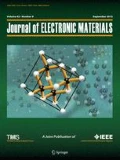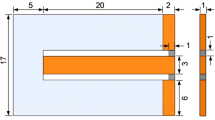To examine how a lead-free solder joint deforms requires understanding of both the elastic and plastic stress and strain behavior. While elastic properties are extremely anisotropic, as discussed in a companion paper, plastic response is also anisotropic, and depends on crystal orientation and the imposed stress state. The relative ease of activating different slip systems (SS) was examined by analyzing the geometry of deformation in samples where a group of four solder balls were sheared to a set displacement at a shear strain rate of ~3 × 10−6/s. By using orientation mapping and Schmid factor analysis, it was possible to identify which SS were most likely to be responsible for observed shape changes. This allows identification of which SS are more facile, which is a necessary foundation required to develop accurate crystal plasticity-based constitutive models for deformation of Sn. Preliminary results are compared with the literature, showing that slip in [001] directions is especially easy, and slip on {211} planes is less likely. These results show that the stress–strain response to a shear displacement differs considerably in each lead-free solder joint in a package, depending on the Sn crystal orientations and their location within the ball and the array.
Similar content being viewed by others
References
A.U. Telang, T.R. Bieler, S. Choi, and K.N. Subramanian, J. Mater. Res. 17, 2294 (2002).
A. LaLonde, D. Emelander, J. Jeannette, C. Larson, W. Rietz, D. Swenson, and D.W. Henderson, J. Electron. Mater. 33, 1545 (2004).
L.P. Lehman, S.N. Athavale, T.Z. Fullem, A.C. Giamis, R.K. Kinyanjui, M. Lowenstein, K. Mather, R. Patel, D. Rae, J. Wang, Y. Xing, L. Zavalij, P. Borgesen, and E.J. Cotts, J. Electron. Mater. 33, 1429 (2004).
S. Terashima, K. Takahama, M. Nozaki, and M. Tanaka, Mater. Trans. JIM 45, 1383 (2004).
P. Borgesen, T.R. Bieler, L.P. Lehman, and E.J. Cotts, MRS Bull. 32, 360 (2007).
T.R. Bieler, H. Jiang, L.P. Lehman, T. Kirkpatrick, E.J. Cotts, and B. Nandagopal, IEEE Trans. Compon. Packag. Technol. (CPMT) 31, 370 (2008).
L.P. Lehman, Y. Xing, T.R. Bieler, and E.J. Cotts, Acta Mater. 2009 (submitted).
I. Dutta, D. Pan, R.A. Marks, and S.G. Jadhav, Mater. Sci. Eng. A 410–411, 48 (2005).
T.R. Bieler, T.-K. Lee, and K.-C. Liu (this volume). doi:10.1007/s11664-009-0919-8.
T.-K. Lee, K.-C. Liu, and T.R. Bieler (this volume). doi:10.1007/s11664-009-0873-5.
M. Fujiwara and T. Hirokawa, J. Jpn. Inst. Met. 51, 830 (1987).
B. Düzgün and I. Aytas, Jpn. J. Appl. Phys. I 32, 3214 (1993).
B. Düzgün, A.E. Ekinci, I. Karaman, and N. Ucar, J. Mech. Behav. Mater. 10, 187 (1999).
A.E. Ekinci, N. Ucar, G. Cankaya, and B. Düzgün, Indian J. Eng. Mater. Sci. 10, 416 (2003).
A.U. Telang and T.R. Bieler, JOM 57, 44 (2005).
T.R. Bieler and A.U. Telang (this volume). doi:10.1007/s11664-009-0909-x.
Acknowledgements
This work was supported by Cisco Systems Inc., by means of a gift to the MSU College of Engineering. The shear apparatus was developed in collaboration between Prof. Morris’ research group at UC Berkeley and Cisco Systems, Inc.
Author information
Authors and Affiliations
Corresponding author
Rights and permissions
About this article
Cite this article
Zhou, B., Bieler, T.R., Lee, TK. et al. Methodology for Analyzing Slip Behavior in Ball Grid Array Lead-Free Solder Joints After Simple Shear. J. Electron. Mater. 38, 2702–2711 (2009). https://doi.org/10.1007/s11664-009-0929-6
Received:
Accepted:
Published:
Issue Date:
DOI: https://doi.org/10.1007/s11664-009-0929-6




